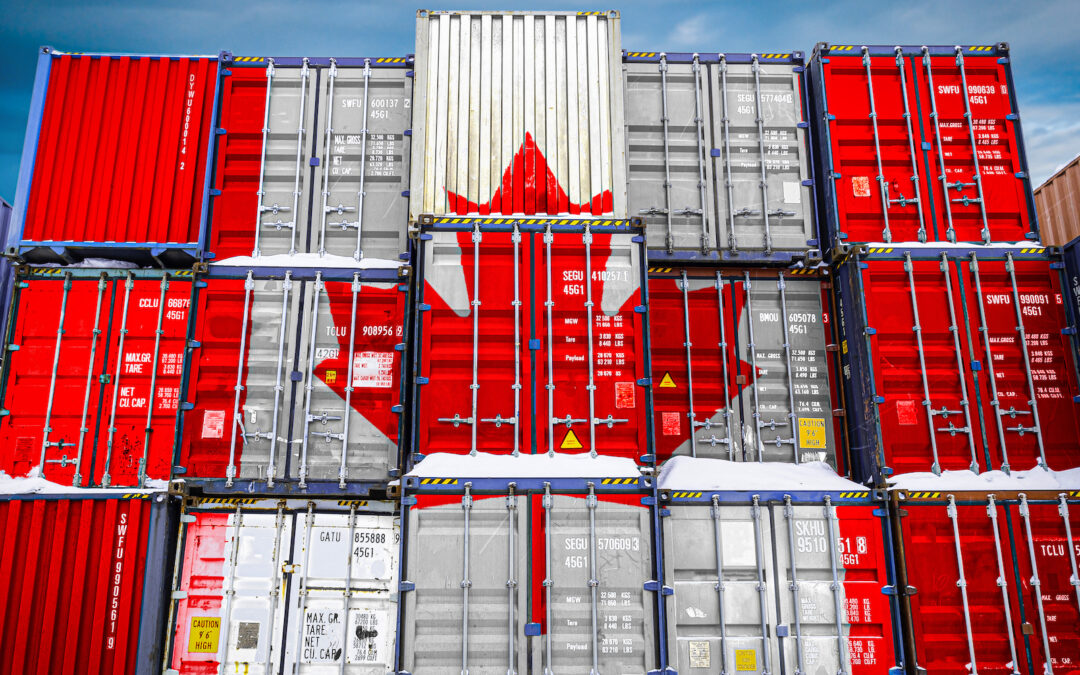By Jock Finlayson, ICBA Chief Economist
Canada is a mid-sized economy, responsible for less than 2% of global production of goods and services – a proportion that has fallen gently over the past two decades. Closer to home, we represent approximately 8% of all economic activity in North America.
Canada is also an “open” economy, meaning we depend heavily on cross-border flows of trade, investment, and data to underpin our standard of living. To pay our way in the world, Canada must sell commodities, manufactured components and finished goods, and a wide range of services to other markets. Identifying the industry sectors where we can strengthen and expand Canada’s export capacity requires a careful examination of what we successfully sell to other countries today.
Last year, Canada exported $779 billion of goods to other countries, a record high. We also exported $161 billion of services, consisting mainly of commercial services (the largest category of service exports; this includes professional, scientific and technical services, digital services, financial services, and engineering and construction services), tourism (when non-Canadian visitors travel to and spend money in the country), and transportation services.
In recent years, the value of Canada’s exports has been boosted by the inflation surge experienced over 2021-23, which pushed up the prices of many of the inputs used to produce the goods and services that we sell to the world. This effect should dissipate in 2024 and beyond as the inflationary forces recently present in the Canadian economy diminish.
The first “hard truth” about Canada’s trade is that natural resource-based products continue to serve as the foundation of our export base.
Table 1 below breaks down Canada’s goods and services exports in 2022 into various groupings. Added together, energy, non-metallic minerals and related products, metal ores/products, forest products, and agri-food (including seafood and related products) made up 52% of Canada’s total exports – and almost three-fifths of merchandise exports. Energy alone accounted for 27% of merchandise exports in 2022, yielding a remarkable $212 billion in export-driven income for Canadian businesses, workers, and governments. Within the energy basket, oil and oil products dominate, making up more than three-quarters of energy sector export revenues. Canada’s energy-related exports will be rising significantly in the next few years as current oil and gas pipeline projects are completed and shipments of LNG from British Columbia start-up.
Outside of natural resources, consumer goods, motor vehicles and parts, industrial machinery and equipment, electronic/electrical equipment, chemicals/plastics, and aircraft and parts are all significant contributors to Canada’s exports, although they occupy a much smaller place in the export mix than the aggregate natural resources sector.
Also worth noting is that natural resource products and motor vehicles and parts together comprise approximately 60% of Canada’s exports of goods and services combined. This underscores Canada’s disproportionate reliance on a handful of industries to sustain our export economy. Most other advanced economies – the U.S., Britain, Germany, France, the Netherlands, Japan, even Spain and Italy – exhibit greater product diversity in their exports.
A second “hard truth” about Canada’s trade is that outside of natural resources, we run chronic “deficits” in most of our commercial exchanges with the rest of the world, particularly in machinery, equipment, motor vehicles/parts, other advanced technology products, consumer goods, and some other segments of manufacturing. In contrast, Canada enjoys substantial trade “surpluses” across all parts of the broad natural resources sector, including – importantly — energy. Table 2 below provides the details.
The implication of the above analysis is that energy and other commodity-producing industries provide a large portion of the economic means needed to pay for the vast array of imported goods and services that contribute to Canada’s high quality of life. This is crystal clear from the trade data published by Statistics Canada, but for some reason cabinet ministers in the Trudeau government rarely talk about the vital role of energy and other natural resource industries in sustaining the country’s export economy and bolstering incomes and living standards across Canada.



